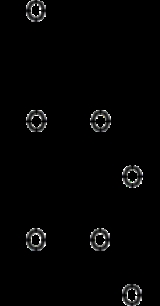
Ketosis
Overview
Ketosis is a state of elevated levels of ketone bodies
in the body. It is almost always generalized throughout the body, with hyperketonemia, that is, an elevated level of ketone bodies in the blood. Ketone bodies are formed by ketogenesis
when the liver glycogen
stores are depleted. The ketone bodies acetoacetate and β-hydroxybutyrate are used for energy.
When glycogen
stores are not available in the cells, fat (triacylglycerol) is cleaved to give 3 fatty acid
chains and 1 glycerol
molecule in a process called lipolysis
.
Ketone bodies
Ketone bodies are three water-soluble compounds that are produced as by-products when fatty acids are broken down for energy in the liver and kidney. They are used as a source of energy in the heart and brain. In the brain, they are a vital source of energy during fasting...
in the body. It is almost always generalized throughout the body, with hyperketonemia, that is, an elevated level of ketone bodies in the blood. Ketone bodies are formed by ketogenesis
Ketogenesis
Ketogenesis is the process by which ketone bodies are produced as a result of fatty acid breakdown.-Production:Ketone bodies are produced mainly in the mitochondria of liver cells. Its synthesis occurs in response to low glucose levels in the blood, and after exhaustion of cellular carbohydrate...
when the liver glycogen
Glycogen
Glycogen is a molecule that serves as the secondary long-term energy storage in animal and fungal cells, with the primary energy stores being held in adipose tissue...
stores are depleted. The ketone bodies acetoacetate and β-hydroxybutyrate are used for energy.
When glycogen
Glycogen
Glycogen is a molecule that serves as the secondary long-term energy storage in animal and fungal cells, with the primary energy stores being held in adipose tissue...
stores are not available in the cells, fat (triacylglycerol) is cleaved to give 3 fatty acid
Fatty acid
In chemistry, especially biochemistry, a fatty acid is a carboxylic acid with a long unbranched aliphatic tail , which is either saturated or unsaturated. Most naturally occurring fatty acids have a chain of an even number of carbon atoms, from 4 to 28. Fatty acids are usually derived from...
chains and 1 glycerol
Glycerol
Glycerol is a simple polyol compound. It is a colorless, odorless, viscous liquid that is widely used in pharmaceutical formulations. Glycerol has three hydroxyl groups that are responsible for its solubility in water and its hygroscopic nature. The glycerol backbone is central to all lipids...
molecule in a process called lipolysis
Lipolysis
Lipolysis is the breakdown of lipids and involves the hydrolysis of triglycerides into free fatty acids followed by further degradation into acetyl units by beta oxidation. The process produces Ketones, which are found in large quantities in ketosis, a metabolic state that occurs when the liver...
.

